Excerpts from Jim Conrad's
Naturalist Newsletter
from the September 1, 2008 Newsletter written in Sabacché, western Yucatán, MÉXICO
WILD YAMS FLOWERING
Out in the scrub you see lots of wiry-stemmed vines with heart-shaped leaves climbing other plants as seen below:
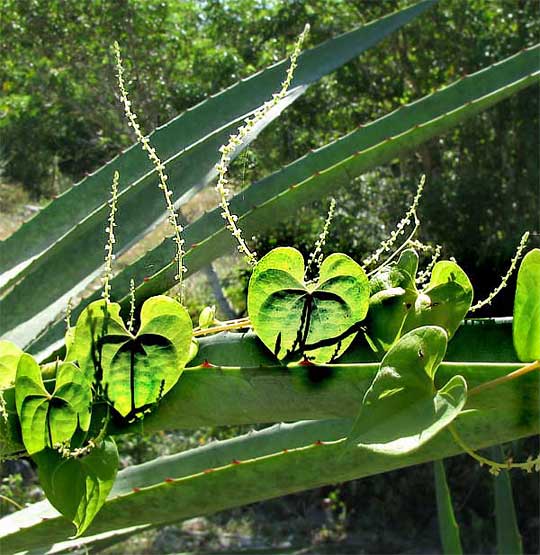
In that picture it's clear I'm not talking about morning-glories, which are often vines with heart- shaped leaves arising from wiry stems, for the flowers are definitely not morning-glory-like. Anyone familiar with Temperate Zone plants will recognize the vine as a wild yam, genus Dioscorea.
One distinguishing feature of Dioscoreas is that their leaves have several strong veins arising at the point of petiole attachment and fanning out. Moreover, other veins connecting the strong veins form vaguely rectangular cells. In most leaves cells formed by reticulating secondary veins are irregular in shape. Dioscorea's somewhat rectangular cells create a "ladder effect" between the strong veins, as seen below:
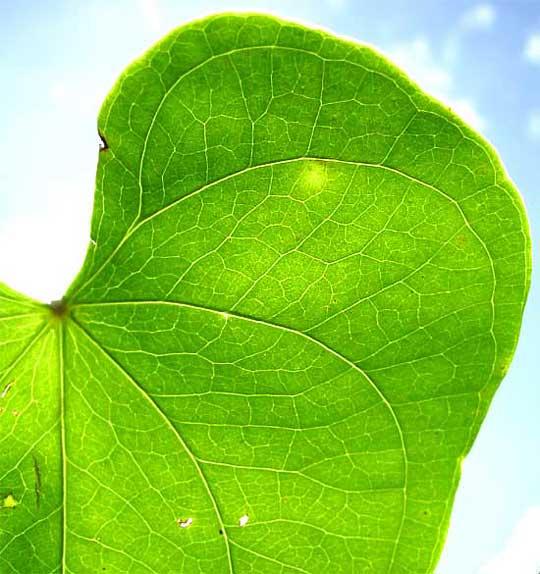
The slender flower spikes arising all along the stem in the first picture also are distinctive for Dioscorea. If you look closely at one of the tiny, widely spaced blossoms in a spike you see that it's a neat little flower with six greenish-yellow, petal-like lobes, three stamens with pollen-producing anthers, but no female parts -- no pistil consisting of stigma, style and ovary. In fact, the tiny flowers in the slender spikes of the first picture are all male flowers, for this species puts its male and female flowers on separate plants -- it is dioecious.
I had to search awhile before finding a female plant, and I have no idea why female plants should be so hard to find. You can see the very different female flowers below:
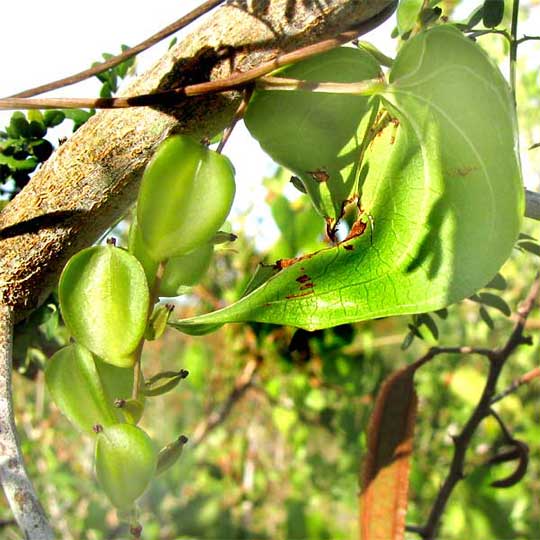
In that picture the female flowers are the three-winged, thumbnail-sized, Chinese-lantern affairs on the left. Each developing ovary is topped by three stubby, brown styles with stigmas.
In Eastern North America after the first frost you often see handsome chains of similar-shaped but mature and straw-colored fruits dangling from bushes, blowing in cold, early-winter wind. These are produced by Dioscorea villosa, also called Wild Yam.
The "yam" part of the name refers to the edible tubers produced by many Dioscorea species. I've always found North America's Wild Yam tubers too small, hard and fibrous to fool with, and from what I can feel with my finger around stem bases of plants here here, it's about the same with this species. However, I'll bet that either species grown in rich, loose garden soil and well nourished might produce something savory and nutritious.
Dioscoreas are unusual enough to have their own plant family, the Wild Yam Family, the Dioscoreaceae. Sometimes sweet potatoes are referred to as yams, but of course they're something else entirely, members of the Morning-Glory Family. The genus Dioscorea was named after Dioscorides, a Greek physician and naturalist of classical times.
Issued on March 5, 2020 from the forest just west of Tepakán; elev. ~9m (~30 ft), N21.053°, W89.052°; north-central Yucatán state, MÉXICO
WILD YAM IDENTIFIED
The above entry from Sabacché has been online for several years, without my being able to identify it to spcies level. In 2020, so much newly appeared literature and photos have appeared that now I know: DIOSCOREA POLYGONOIDES.
Ten Wild Yam species -- genus Dioscorea -- are listed by CICY as occurring in the Yucatan Peninsula. Most of those ten species bear leaves noticeably different from the deeply lobed, heart-shaped ones shown above, except for Dioscorea convovulaceae, whose male flowers are held in much-branched flowering heads, instead of the usually unbranched ones shown above, occurring solitary or in pairs. The male flowering heads are very slender, and the flower clusters show plenty of rachis between them. The male flowering heads are fairly distinctive.
In the above Sabacché entry several immature fruits from female flowers are shown. They also are a little different from other species' fruits. They're fairly small, and they're conspicuously wider immediately below the dark stigma remnants. This week, these features helped me connect our Sabacché plants with mature fruits commonly seen on leafless, dried-up stems in the regenerating woods near Tepakán. Below, you can see their typical appearance:
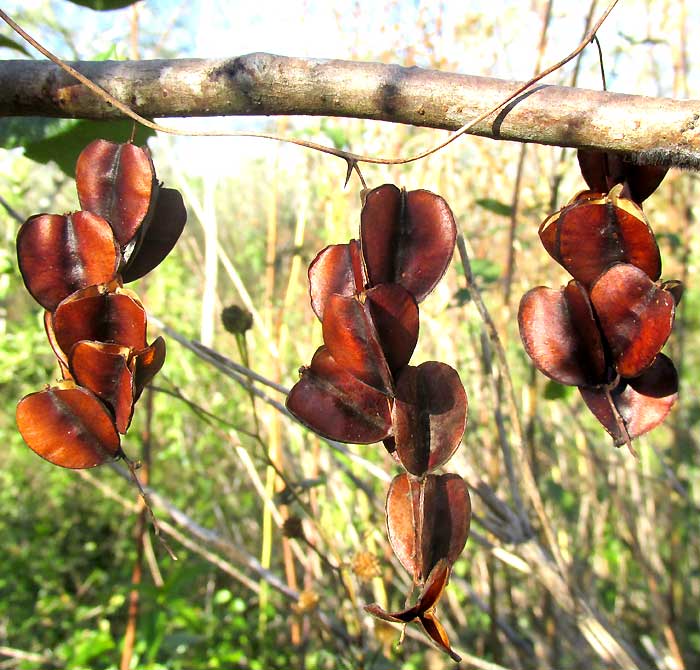
Below is a close-up of a single fruit:
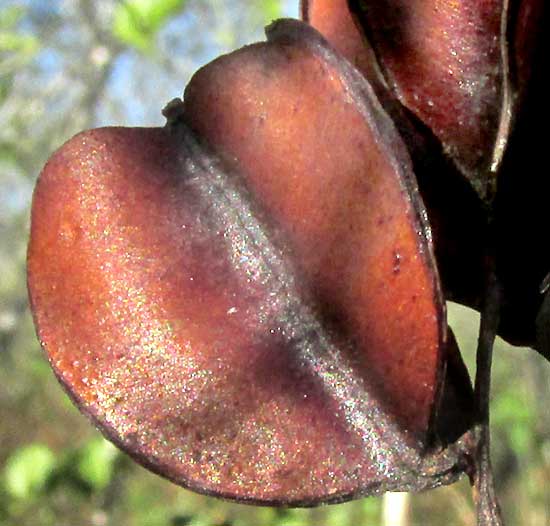
Dioscorea polygonoides occurs in moist lowlands, especially on limestone, from southern Mexico and the Caribbean south through Central America to Argentina and Brazil in South America. Like most Dioscorea species it produces an edible, tuberous rootstock. The tubers can be cooked like potatoes, though one English name listed for it is Bitter Jessie. The more common use of the tubers seems to be to toast and grind them, and make "coffee" from the grounds.